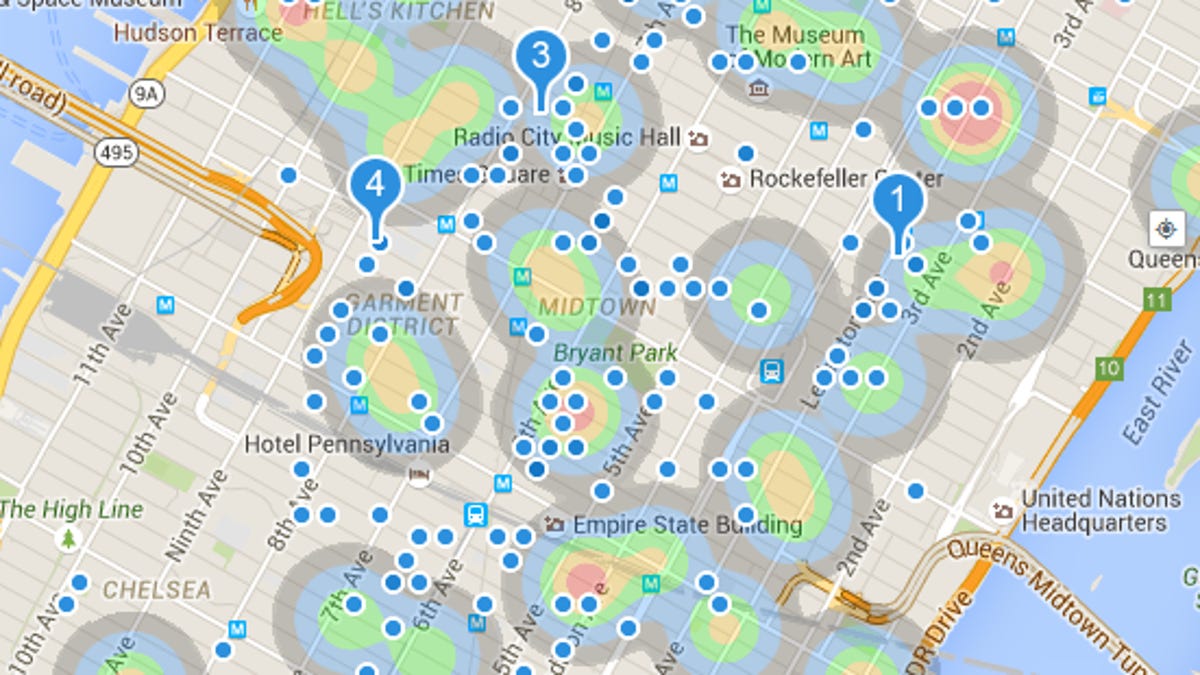Does your company from time to time need to find the optimal geographical location for something? Perhaps you need to find the best spot for a new store, storage facility, windmill or food truck? To solve this we can use either of two different methods. But first we need to collect a number of location examples. The more examples we have the better the AI will be able to understand what we want it to learn. For each location we need to add as much data as we can find, like:
- Average outside foot traffic
- Proximity to highway
- Windy days per year
- Number of people working in the area
- Day of week
If we treat this as a “classification” problem we also need to label every location as “good” or “bad”. We then train the AI on this data. Now we can show the AI new locations and it will tell us (classify) if it considers a particular location to be “good” or “bad”. Pretty neat.
Sometimes the good vs bad classification is not fine grained enough. Then we can treat this as a “regression” problem instead (meaning the AI will predict a number for us). To do this we need to assign a number instead of a label to each location. So a top location could be a 10, a bad location 1, and others somewhere in the middle. We train the AI and it will now be able to give us a number for new locations we show it. This way we are able to rank a list of possible new locations. Even neater!
Why do this
If you need to choose between several possible locations, why would you not want to pick the best one? Of course you want the one you hope will be attracting the most foot traffic, take the least time to drive a truck to, or generate the most electricity. As in many use cases us humans normally have a hunch, but there are too many interacting variables to know for sure. This is where the AI can shine and help us out with its opinion about something based on the examples we have trained it on. So this is a perfect way to make sure your company maximizes its revenue!
How do I get started
You probably have a list of potential locations you are choosing from as well as the example data you want to base your decision on. You need to enrich each item on this combined list with the data you want the AI to consider. This could mean that you have to dig into external data sources, maybe you have to buy statistical data or weather reports, or even just perform lots of web searches. You can even add images of the neighbourhood as input data about a location! Remember, the more relevant data you have, the better the AI’s predictions.
For a retail store chain, here are some example data points to collect:
- Distance to nearest city center
- Distance to nearest highway
- Number of people living within 5 km from location
- Store size
- List of all departments in the store
Now when you train an AI with this data perhaps it will find the relationship that “big store, close to highway and has many departments” will be rated as 8. But perhaps it will also find that “small store, close to city center with many people living nearby” is a 10.
For a food truck here are some example data points to collect:
- Street
- People working in the area
- People living in the area
- Day of week
- Day of month
- Season
- Today’s special was X
This might reveal that “on tuesdays in the summer” going to Street A will always be your best choice.
Remember that you yourself have rated the examples, so the AI will put a higher valuation on the things you have shown it to be more valuable. Hopefully this gives you a better material on which to base your final decision.
If you want to learn more about AI please visit: praktisk.ai



